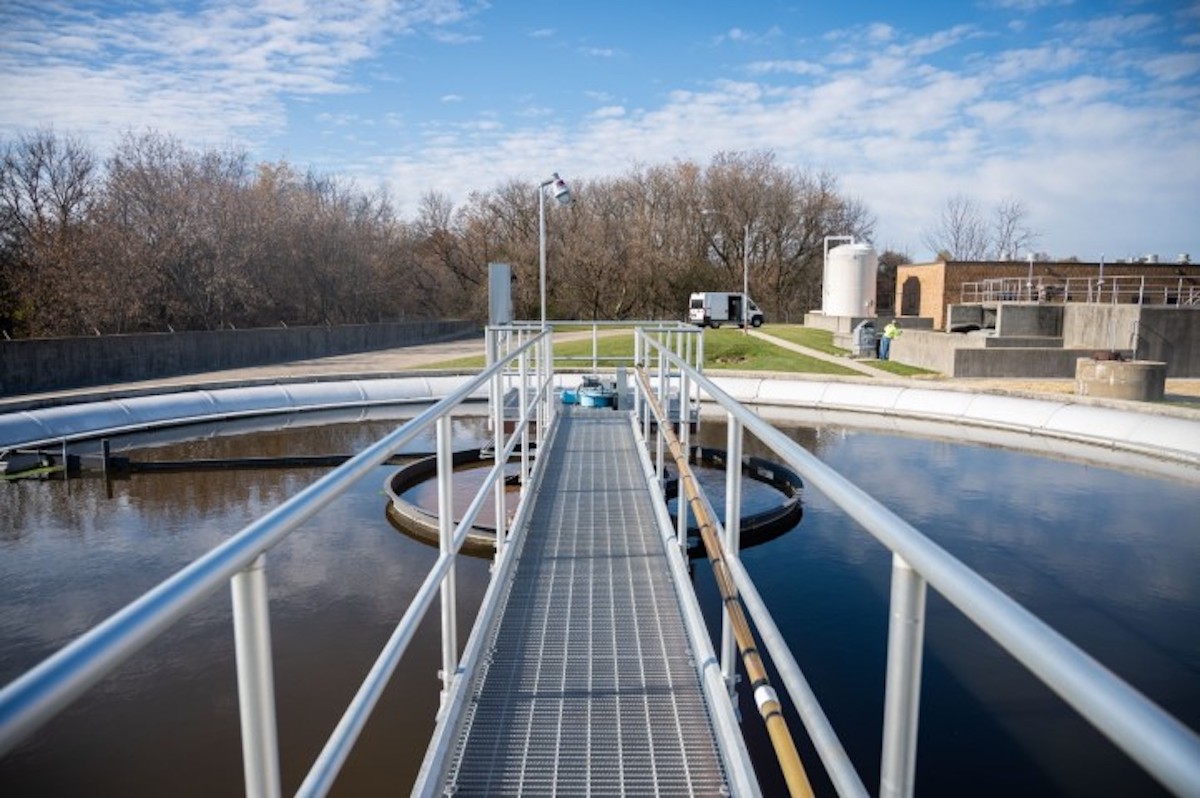How to manage the wastewater phosphorus removal process to meet new EPA standards
To protect receiving bodies of water and avoid eutrophication, the U.S. Environmental Protection Agency (EPA) has encouraged states to adopt Total Nitrogen and Total Phosphorus Numeric Water Quality Standards. These numeric criteria help identify and list impaired waters, develop Total Maximum Daily Loads (TMDLs) and write National Pollutant Discharge Elimination System (NPDES) permits for wastewater treatment plants (WWTPs) discharging nitrogen and phosphorus.
The new EPA standard for Total Phosphorus (TP) limits applies to all major WWTPs, which have an average design flow of at least 1 million gallons per day. For example, in Illinois, the TP limit is 1 mg/L. For plants that discharge into impaired streams and rivers or reach their TMDLs, TP limits are often more stringent, capped around 0.5 mg/L. Even plants without numeric TP limits in discharge permits or that do not discharge into impaired streams must comply with Total Phosphorus Monitoring and Reporting requirements.
As part of the NPDES permit renewal process, all major plants must now prepare a phosphorus removal feasibility study outlining treatment methods, capital costs, annual operations and maintenance costs to achieve target TP levels within a specific time frame.
Here's how Publicly Owned Treatment Works (POTWs) can optimize phosphorus removal and why municipalities need to partner with wastewater engineering experts like Fehr Graham to manage the wastewater phosphorus removal process and prepare Phosphorus Optimization Plans.
Strategies to optimize the wastewater phosphorus removal process
Biological phosphorus removal (BPR) and enhanced biological phosphorus removal (EBPR)
Although the solids removal process extracts particulate phosphorus, soluble phosphorus removal requires additional treatment. BPR is a common addition to conventional activated sludge systems. In this wastewater phosphorus removal process, microorganisms called phosphate accumulating organisms (PAOs) metabolize soluble phosphorus. The level of biological phosphorus removal is directly proportional to the number of PAOs present in the system.
WWTPs can enhance this process by encouraging PAOs to accumulate more phosphorus than their metabolic processes require. To do so, organic matter must first ferment in an anaerobic environment. This produces fatty acids that PAOs feed on to build up carbon reserves. In the second phase, wastewater passes into an aerobic environment where PAOs metabolize soluble phosphorus at an enhanced rate.
EBPR is one of the most environmentally sustainable phosphorus removal methods and has relatively low long-term operation costs. However, it requires upfront capital investment to install or retrofit tanks. Plants using BPR or EBPR have until December 2030 to comply with the revised TP limit.Biological nutrient removal (BNR)
The BNR process uses microorganisms to extract dissolved nitrogen and phosphorus from wastewater. It works best when there is sufficient organic carbon, magnesium and potassium in the secondary influent. WWTPs using BNR will have to comply with the EPA's revised TP limit by December 2035.
Chemical phosphorus removal (precipitation)
Phosphorus precipitation involves dosing wastewater with metal salts, such as ferric, ferrous, aluminum or calcium salts. Salts are added directly into aeration tanks, where they interact with soluble phosphorus and form precipitate. The metal precipitate then travels with the waste secondary sludge to digestion tanks.
Because chemical phosphorus removal does not require constructing or upgrading tanks, it can have lower capital costs than biological removal methods. However, chemical and long-term operations costs are often higher.
Precipitation can supplement EBPR to address more stringent effluent phosphorus standards or when effluent and environmental qualities, such as low temperatures or insufficient organic compounds in wastewater, hinder biological processes. Chemical methods also provide a temporary solution while upgrading a treatment plant for EBPR. WWTPs that use chemical phosphorus removal have until December 2025 to comply with revised TP limits.
Algal phosphorus removal
In this process, wastewater containing phosphorus feeds into shallow ponds seeded with algae. The phosphorus acts as a fertilizer. As aquatic plants grow, they consume phosphorus, thereby reducing levels in wastewater. Some of the water and algae mixture flows into a settling pond, where the polished effluent is separated from algae and released into surface water.
Ion exchange technology
This method removes phosphorus from wastewater and simplifies the recovery process. Ion exchange technology extracts phosphorus from wastewater by exchanging porous anions with phosphate roots. The higher pH of the ion exchange media helps remove phosphorus. The regenerative media has high potential to remove and recover phosphate from wastewater streams even after several exchange regenerations.
Applying EPA guidelines to your WWTP
Under EPA guidelines on the wastewater phosphorus removal process, WWTPs must address influent and effluent in their Phosphorus Discharge Optimization Plans.
To reduce total phosphorus in WWTP influent:
- Identify commercial, industrial, institutional, municipal and other sources with the highest potential to reduce phosphorus in influent.
- Determine whether known sources (i.e., restaurant and food preparation) can adopt phosphorus minimization and water conservation plans.
- Set reduction goals and evaluate TP limits on influent sources with excessive phosphorus.
To reduce total phosphorus in WWTP effluent:
- Adjust the solids retention time and aeration rates for biological phosphorus removal.
- Change aeration settings in plug flow basins by turning off air or mixers on the basin system's inlet side.
- Improve aeration within holding tanks to minimize the impact on recycle streams.
- Adjust flow through basins to enhance biological nutrient removal.
- Increase volatile fatty acids for biological phosphorus removal.
Wastewater treatment plant operators should review their renewed or modified NPDES permits for revised TP limits and consult with their engineers to evaluate plant-specific impacts. Many POTWs benefit from expert assistance to prepare and submit required documentation, such as TP Feasibility Study Reports, TP Optimization Plans and Facilities Planning Reports. By consulting with experienced wastewater engineers, municipalities can also explore options and find phosphorus removal solutions that work for their facilities and budget.
Partner with Fehr Graham to manage the wastewater phosphorus removal process
At Fehr Graham, we understand the struggles municipal leaders face while deciding between capital-intensive biological treatment methods or operations-intensive chemical treatment methods for the wastewater phosphorus removal process. As an experienced, dedicated and passionate team of wastewater engineers, we help WWTP operators develop innovative strategies for phosphorus removal. Some of our projects to improve phosphorus removal include:
- Adding Integrated Fixed-Film Activated Sludge (IFAS) with BNR for nitrogen and phosphorus removal to South Beloit's WWTP.
- Upgrading Monticello WWTP to comply with nutrient regulations.
Whether working with a major WWTP or expanding treatment capacity, we get to know your community's unique needs and can recommend design and optimization strategies for your treatment plant to meet the revised TP limits.
To learn more about how Fehr Graham can help you with the wastewater phosphorus removal process, contact us or call 217.352.7688



